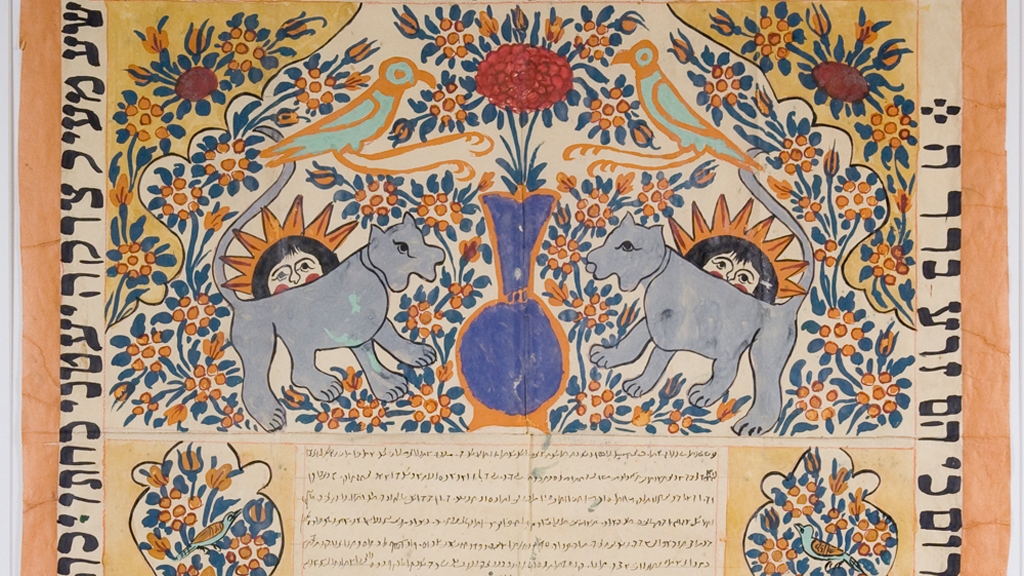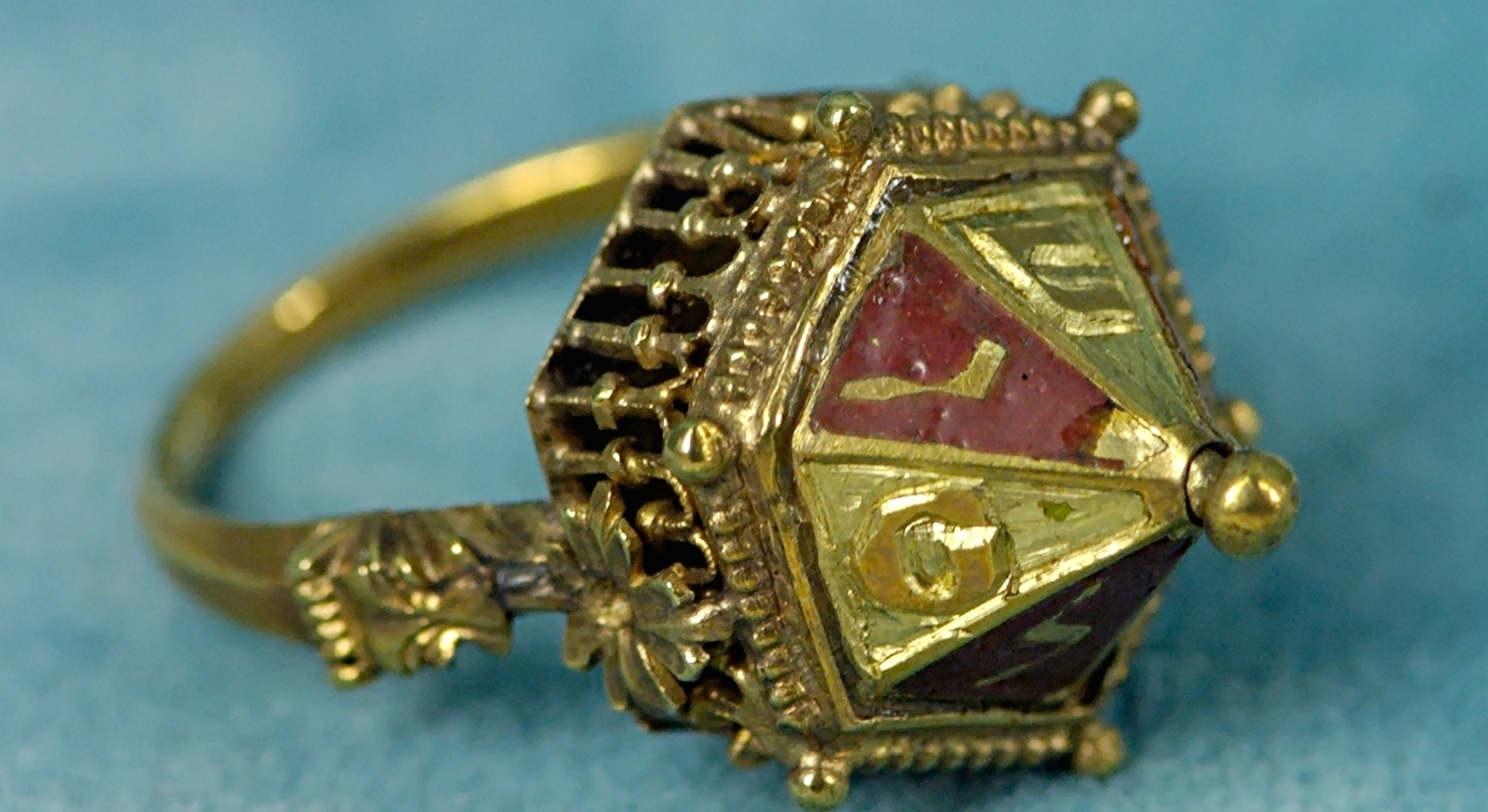In biblical times, people were married in early youth, and marriages were usually contracted within the narrow circle of the clan and the family. It was undesirable to marry a woman from a foreign clan, lest she introduce foreign beliefs and practices.
Negotiating a Match
As a rule, the fathers arranged the match. The girl was consulted, but the “calling of the damsel and inquiring at her mouth” after the conclusion of all negotiations was merely a formality.
In those days a father was more concerned about the marriage of his sons than about the marriage of his daughters. No expense was involved in marrying off a daughter. The father received a dowry for his daughter whereas he had to give a dowry to the prospective father-in-law of his son when marrying him off.
The price paid by the father of the groom to the father of the bride was called mohar. (The term continues to be included in the text of the traditional ketubah, or Jewish wedding contract.) In Genesis (Parashat Vayishlah), Shekhem [Dinah’s suitor] said to Dinah’s father and her brothers: “Let me find favor in your eyes, and what ye shall say unto me I will give. Ask me never so much mohar and mattan, and I will give according as ye shall say unto me; but give me the damsel to wife.”

Help us keep Jewish knowledge accessible to millions of people around the world.
Your donation to My Jewish Learning fuels endless journeys of Jewish discovery. With your help, My Jewish Learning can continue to provide nonstop opportunities for learning, connection and growth.
“Mattan” was the Hebrew word for the gifts given by the groom to the bride in addition to the mohar.
The mohar was not always paid in cash. Sometimes it was paid in kind, or in service. The Book of Genesis relates the story of the servant of Abraham, who, after his request for Rebecca [to marry Isaac] was granted, “brought forth jewels of silver, and jewels of gold, and raiment, and gave them to Rebecca; he gave also to her brother and to her mother precious things.” The servant thus gave mattan to Rebecca, and mohar to her brother and mother.
The Bible does not specify what was to be done with the mohar in case the marriage agreement was broken by either of the two parties.
Mohar as Purchase and Gift
The mohar was originally the purchase price of the bride, and it is therefore understandable why it was paid by the father of the groom to the father of the bride. In ancient days, marriage was not an agreement between two individuals, but between two families.
The newly married man usually did not found a new home for himself, but occupied a nook in his father’s house. The family of the groom gained, and the family of the bride lost, a valuable member who helped with all household tasks. It was reasonable, therefore, that the father of the groom should pay the father of the bride the equivalent of her value as a useful member of the family.
Yet in the course of time the mohar lost its original meaning as a purchase price paid to the father for his daughter and assumed the significance of a gift to the near relatives of the bride. As far back as in early biblical times, it was customary for a good father to give the whole of the mohar or at least a large part of it to his daughter. A father who appropriated the whole mohar for himself was considered unkind and harsh.
The portion of the mohar which the bride received from her father, and the mattan, which the groom presented to her, were not the only possessions she brought to matrimony. A rich father sometimes gave his daughter a field or other landed property as well as female slaves.
Betrothal and the Wedding
Until late in the Middle Ages, marriage consisted of two ceremonies that were marked by celebrations at two separate times, with an interval between. First came the betrothal [erusin]; and later, the wedding [nissuin]. At the betrothal the woman was legally married, although she still remained in her father’s house. She could not belong to another man unless she was divorced from her betrothed. The wedding meant only that the betrothed woman, accompanied by a colorful procession, was brought from her father’s house to the house of her groom, and the legal tie with him was consummated.
This division of marriage into two separate events originated in very ancient times when marriage was a purchase, both in its outward form and in its inner meaning. Woman was not recognized as a person but was bought in marriage, like chattel.
Marriage, as with any type of purchase, consisted of two acts. First the price was paid and an agreement reached on the conditions of sale. Sometime later the purchaser took possession of the object. In marriage, the mohar was paid and a detailed agreement reached between the families of the bride and groom. This betrothal was followed by the wedding, when the bride was brought into the home of the groom, who took actual possession of her.
In those days the betrothal was the more important of these two events and maintained its importance as long as marriage was actually based upon a purchase. But as women assumed more importance as individuals, and marriage ceased to be a purchase, attaining moral significance, the actual wedding became more important than the betrothal.
A New Attitude Toward Women
During biblical times, even before the Babylonian exile, Jewish life evolved and changed in many ways, including the attitude toward women. Over time, women came to be regarded as endowed with personalities just as were men.
Even as far back as early biblical times, we find traces of a new moral attitude towards women. For instance, although a man was legally allowed to marry more than one wife, barring kings and princes, very few used this right. As a rule, the ordinary Jew lived in monogamous marriage. [However, as history progressed, monogamy has been observed predominantly by Ashkenazic Jews, following the ban on polygamy in about the 10th century by Rabbenu Gershom, Meor Ha-Golah (the Light of the Diaspora). In Sephardic communities polygamy has never been outlawed, and several sources relate that Christians in Muslim Spain were scandalized by the not infrequent cases of Jewish polygamy.]
An Ancient Marriage Record
At the beginning of the 20th century, an actual Jewish marriage record during the period of the return from the Babylonian exile was discovered — the oldest marriage contract in Jewish history. The marriage did not take place in Palestine or among the exiles in Babylon, but among the Jews of Elephantine and Aswan, at the southern border of Egypt.
The marriage contract of Mibtachiah [the bride] and As-Hor [the groom] began with a declaration of marriage by As-Hor to Mibtachiah’s father. “I came to thy house for thee to give me thy daughter, Mibtachiah, to wife; she is my wife and I am her husband from this day and forever.”
Following this declaration of betrothal, all terms of the marriage contract were written in detail. As-Hor paid Machseiah, the father, five shekels, Persian standard, as a mohar for his daughter. Besides, Mibtachiah received a gift of 65 1/2 shekels from As-Hor. From this we gather that the mohar that fathers received for their daughters was then merely a nominal payment, the formality of an older custom.
According to the marriage contract, Mibtachiah had equal rights with her husband. She had her own property which she could bequeath as she pleased, and she had the right to pronounce a sentence of divorce against As-Hor, even as he had the right to pronounce it against her. All she had to do was to appear before the court of the community and declare that she had developed an aversion to As-Hor. We do not know to what degree the equality of rights enjoyed by Jewish women of Elephantine was due to Jewish or to Persian-Babylonian law.
The Ketubah, or Marriage Contract

In many points of content and form, Mibtachiah’s marriage contract resembles the version of the ketubah (wedding contract) still in vogue in modern Jewish life.
In references to marriage throughout the Bible, the mohar was paid and gifts presented, but a written contract was never mentioned. However, the Book of Deuteronomy specifically states that if a man dislikes his wife, “he writes her a bill of divorcement and gives it in her hand” (24: 3). Modern critics of the Bible have agreed that on the whole, the Deuteronomic law is a product of the century preceding the Babylonian exile. If a written document was employed at that period in dissolving a marriage, we have to assume that it was also employed in contracting a marriage.
A Divorce Penalty
The mohar institution was entirely transformed during late-biblical and post-biblical times. From a bridal price it finally became a lien to be paid by the husband in case of divorce, or by his heirs in case of his death.
The change in the mohar institution was a direct result of changes in the material conditions of life. In the simple conditions of early biblical days, all sons and daughters married young. No one stayed single.
The situation changes, however, in conditions reflected in the wisdom book of Ben-Sira, written not long before the uprising of the Maccabees. Apparently bachelorship, common among Jews in talmudic times, had its beginnings in pre-Maccabean days. Economic conditions were such that men hesitated to shoulder the responsibility of matrimony. It was not unusual for women to support the men they married.
Under these conditions there was no place for the old mohar institution. Fathers no longer expected any material gain from their daughters’ marriages. On the contrary, fathers often gave rich dowries to daughters as an inducement to marriageable men.
Yet the mohar institution did not pass out of existence. It was reformed intermittently in the course of this period, adapting itself to new circumstances. The first stage in this process was to make the bride’s father a mere trustee of the mohar. The money was then inherited ultimately either by the husband or by his children. This reform availed little, so the husband himself was made the trustee of the money, which was employed to buy household articles.
The last step in the reform of the mohar institution was made by Simeon ben Shatach, head of the Pharisees, who were the ruling party in the state during the reign of the Maccabean queen, Salome Alexandra (76-67 B.C.E.). He declared that the mohar, which was ordinarily 200 silver dinars for a girl, and 100 for a widow, should merely be written in the , the marriage deed, as a lien of the wife on the estate of her husband, to be paid to her only if he divorced her, or at his death!
This reform served two humane purposes. It made marriage easier, and divorce more difficult. A man did not need 200 dinars in cash in order to marry a girl, but he needed this amount if he wanted to divorce her. The ketubah thus protected the woman from being arbitrarily divorced by her husband.
Adapted with permission from The Lifetime of a Jew Throughout the Ages of Jewish History (UAHC Press).



